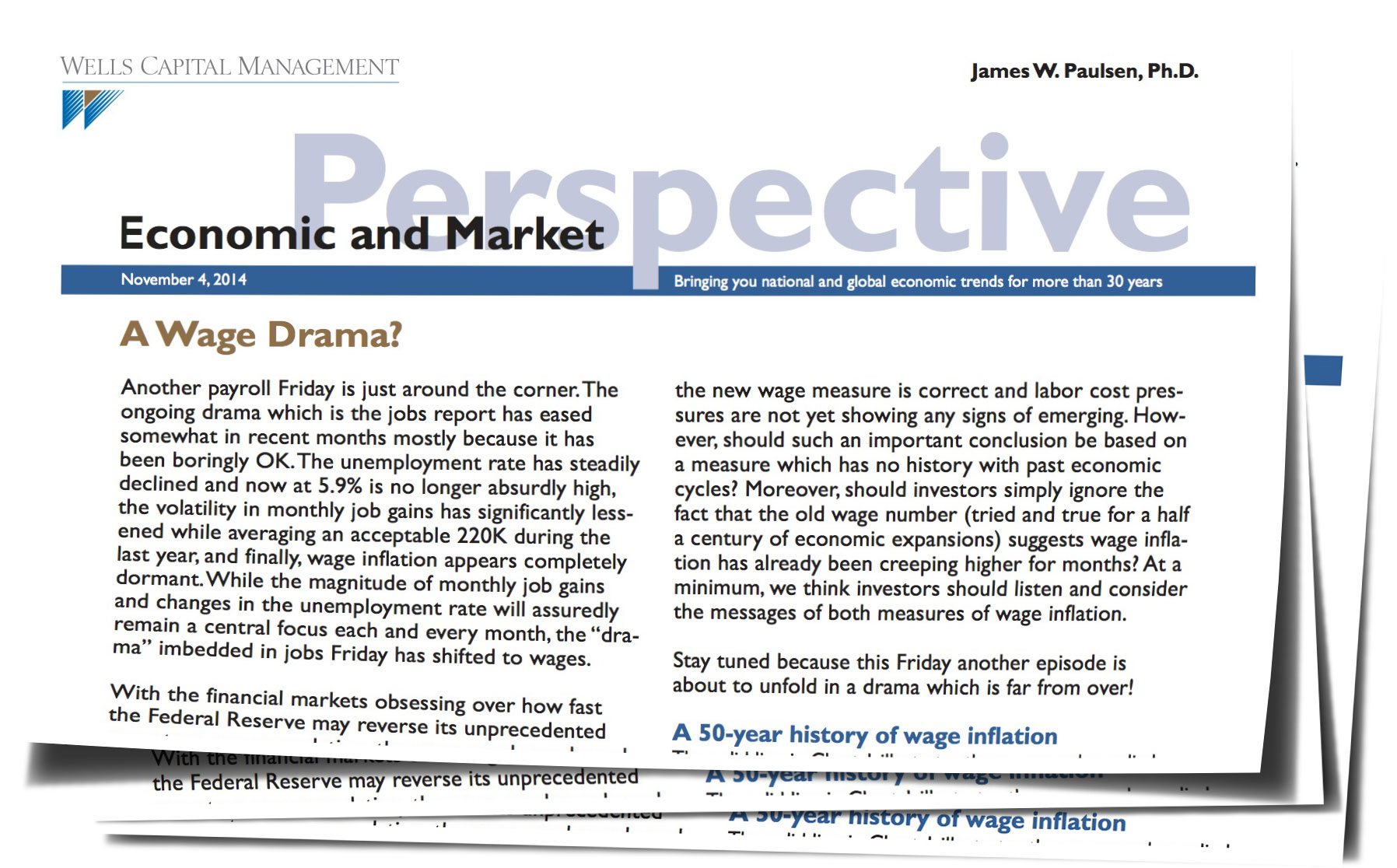A Wage Drama
by James Paulsen, Chief Investment Strategist, Wells Capital Management
November 3, 2014
Another payroll Friday is just around the corner. The ongoing drama which is the jobs report has eased somewhat in recent months mostly because it has been boringly OK. The unemployment rate has steadily declined and now at 5.9% is no longer absurdly high, the volatility in monthly job gains has significantly lessened while averaging an acceptable 220K during the last year, and finally, wage inflation appears completely dormant. While the magnitude of monthly job gains and changes in the unemployment rate will assuredly remain a central focus each and every month, the “drama” imbedded in jobs Friday has shifted to wages.
With the financial markets obsessing over how fast the Federal Reserve may reverse its unprecedented monetary accommodation, the wage number released with the monthly jobs report now holds the most intrigue. Indeed, like any good drama, the titillation associated with wage inflation has been enhanced since the Bureau of Labor (BLS) recently changed its primary benchmark used to measure wages. The current wage number du jour has only been part of the monthly jobs report since February 2010. This new wage number suggests wage pressures remain dormant which has produced a generalized calm surrounding inflation risk among both investors and the Federal Reserve. However, the antagonist in this drama, the old wage number, tells a very different story. This traditional wage number relied on and reported by the BLS for the last 50 years shows wage inflation bottoming about two years ago and since accelerating by about 1%.
Despite having essentially no history with which to judge its efficacy, the new wage number is nonetheless widely considered sacrosanct. It suggests no need to worry about wages yet and most are indeed nonplussed ignoring the cautionary story being delivered by a wage number which served as our primary assessment of wage pressures for the last 50 years. Perhaps the new wage measure is correct and labor cost pressures are not yet showing any signs of emerging. However, should such an important conclusion be based on a measure which has no history with past economic cycles? Moreover, should investors simply ignore the fact that the old wage number (tried and true for a half a century of economic expansions) suggests wage inflation has already been creeping higher for months? At a minimum, we think investors should listen and consider the messages of both measures of wage inflation.
Stay tuned because this Friday another episode is about to unfold in a drama which is far from over!
A 50-year history of wage inflation
The solid line in Chart 1 illustrates the wage number relied upon by investors, economists, and policy officials for almost 50 years. It shows the annual percent change in the average hourly earnings for all non-supervisory workers. This comprises about 80% of all wage earners.
Read/download James Paulsen's complete report below:
Copyright © Wells Capital Management














